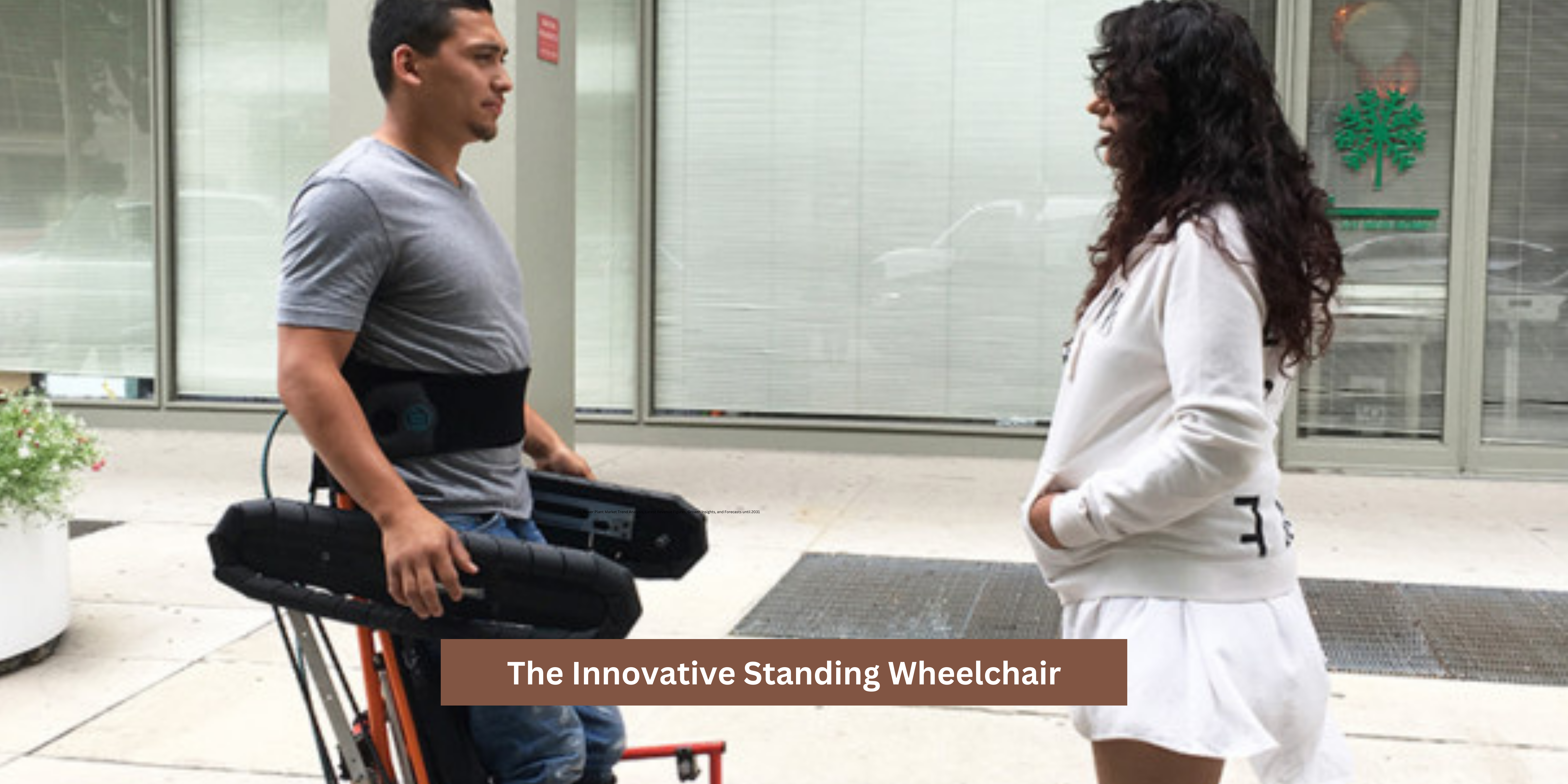Introduction:
Advances in assistive technology have significantly transformed the lives of those with mobility problems in recent years. A revolutionary invention that has received a lot of attention is the standing wheelchair. By enabling users to stand up straight, this innovative technology goes beyond standard wheelchairs and offers a host of psychological and physical advantages. We will look at the features, advantages, and possible effects of standing wheelchairs on people with mobility problems in this blog article.

Features of the Standing Wheelchair:
Vertical Lifting Mechanism: A standing wheelchair’s vertical elevating mechanism is its main characteristic. Users may effortlessly go from a seated to a standing posture thanks to this device. The wheelchair effortlessly raises the user to a standing position using a mix of electric and hydraulic motors, encouraging an active and involved lifestyle.
Customizable Design: Manufacturers are aware that every person has different requirements and preferences. Standing wheelchairs include features that may be customized as a consequence. The height, tilt, and other parameters may be changed by users to guarantee a comfortable and unique experience. This flexibility is essential for meeting the needs of various body shapes and mobility problems.
User-Friendly Controls: User-friendly controls are a feature of standing wheelchairs that improve user freedom. Users may easily manipulate the standing and sitting functions with the help of these controls, which can be handled manually or electronically. People with different levels of motor function may use the wheelchair independently thanks to its straightforward design.
Benefits of Standing Wheelchairs:
Health and Physical Well-being: The advantages of standing for health are widely established, and standing wheelchairs are designed to help people with mobility disabilities benefit from these advantages. Bearing weight through the legs lowers the risk of osteoporosis and cardiovascular problems by enhancing circulation and bone density. Standing also improves respiratory health, intestinal function, and digestion.
Psychological Well-being: Underestimating the psychological effects of standing up is a mistake. Standing eye to eye with someone may greatly improve self-esteem and mental health for a large number of people with mobility problems. It encourages inclusion, self-reliance, and an optimistic view on life.
Social Interaction: Because standing wheelchairs enable users to engage in discussions at eye level, they promote greater social contact. By doing so, boundaries that could be present in typical sitting wheelchairs are broken down and a stronger sense of connection with people is fostered. The ability to participate in social activities more easily has a good impact on one’s general quality of life and mental health.
Functional Independence: By helping users reach objects at varying heights, interact with their environment more skillfully, and carry out everyday tasks with more autonomy, standing wheelchairs support functional independence. People’s quality of life is enhanced by this increased functionality as it allows them to do chores that were previously difficult or impossible to accomplish while seated.
Preventing Secondary Health Complications: Sitting for extended periods of time can cause a number of health issues, such as joint stiffness, pressure ulcers, and muscular contractures. In order to address these problems, standing wheelchairs offer opportunities for weight shifting and mobility, which lowers the risk of secondary health consequences brought on by prolonged periods of inactivity.
Impact on Daily Life:
Standing wheelchairs have the potential to completely change the way people with mobility disabilities live their everyday lives. These cutting-edge gadgets have the potential to have a big influence in the following ways
Increased Workplace Inclusion: People with standing wheelchairs can take part in job activities more actively since they can stand. Users can more easily access workstations, engage with coworkers, and support a more varied and inclusive workplace when workstations have adjustable heights.
Greater Educational Opportunities: Standing wheelchairs provide advantages in the classroom as well. Pupils who struggle with their mobility can connect with classmates, participate more completely in class activities, and access learning resources at different heights. This fosters equality in the academic context and improves their educational experience as well.
Enhanced Leisure and Recreational Activities: There are more options for leisure and recreational activities while using a standing wheelchair. Through engaging in outdoor activities, sports, or even just negotiating rough terrain, people can break down obstacles to participation and lead more happy lives.
Read More: The Future of Smart Speed Bump
Read More: High-Performance Concrete Build Business Case Value
